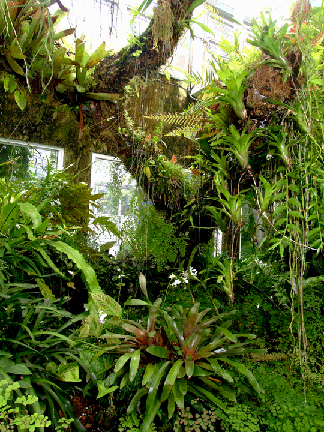![]()
Aroids and other genera in the Collection
Take the Tour Now?
Orchids
The
Exotic Rainforest
Plants in
the Exotic Rainforest Collection
The images on this website are copyright protected. Please contact us before any reuse.
Detailed information on Growing Anthurium Species
Click this Link
We do not sell Anthurium or seeds.
The Exotic Rainforest is a private botanical garden.
The Exotic Rainforest Epiphyte Tree
In any rain forest, more plants are
up in the trees than in the ground!
This page explains how nature does it and how you can duplicate it at home!
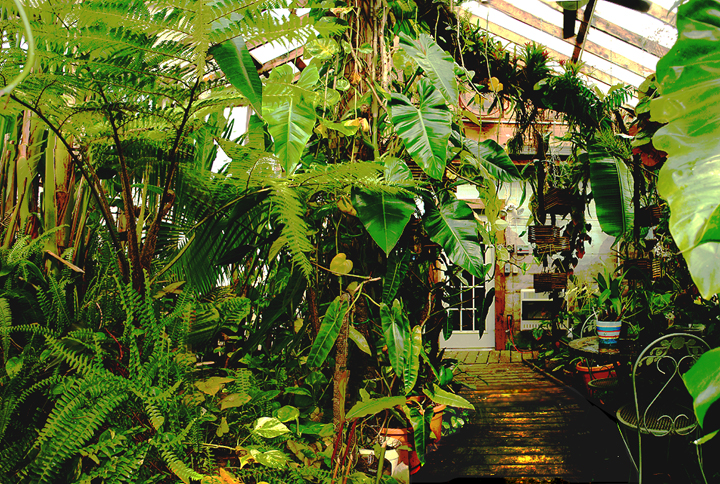
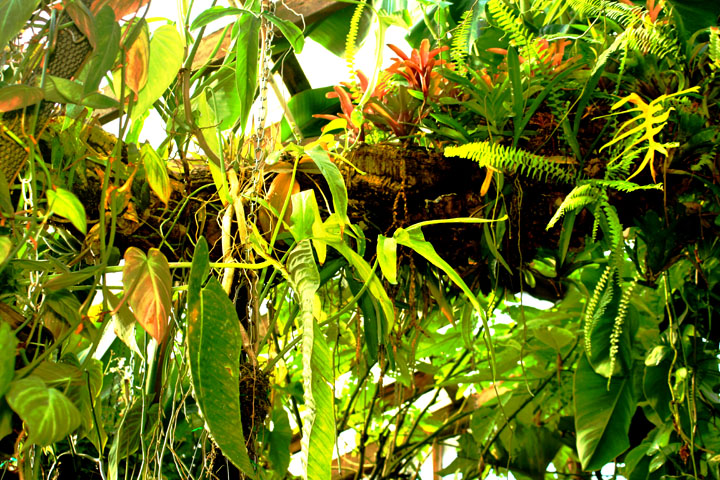
For years we have been making plans to add an epiphytic display to the Exotic Rainforest and it finally exists.
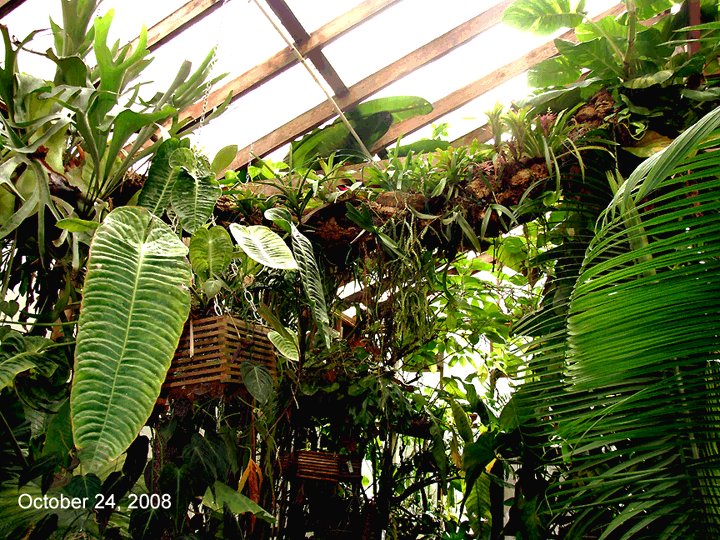 More
plants grow on trees in the rain forest than in the ground! The
photo above shows our "tree" approximately 5 months after it was
installed. The photo right is the entrance to our atrium. The photos below allow you
to see how the growth is progressing along with an explanation of how
the "log" was constructed.
More
plants grow on trees in the rain forest than in the ground! The
photo above shows our "tree" approximately 5 months after it was
installed. The photo right is the entrance to our atrium. The photos below allow you
to see how the growth is progressing along with an explanation of how
the "log" was constructed.
The top of the log is now covered with close to100 plants, each one "glued" into place. The "log" is not truly a log but simply cork bark covering PVC pipe.
Read the explanation
to learn how you can build your own epiphytic log!
Photo right: July 5, 2008
The log changes from month to month and week to week since this is a living experiment. The "tree" extends over 4 meters or 13 feet. Eventually a second "branch" will extend from the top of the atrium center post and over the Exotic Rainforest to create our own canopy. The entire display looks exactly like a living tree but instead is nothing more than 10.16cm (4 inch) PVC pipe covered with naturally curved cork bark. The bark is firmly attached to the pipe and the plants. Some have already attached themselves and did so during the several years the basic log structure was housed in our "forest". I bought the material in 2000 and built the basic structure in sections.
The epiphyte (ep-a-FITE) tree is now safely in place and suspended by high tension
wire at several points while it is firmly anchored to the center support
of the building. From
the first day I conceived the ExoticRainforest atrium, my goal in building
the structure in the NW corner of Arkansas has been to be to observe natural
growth and compare species'
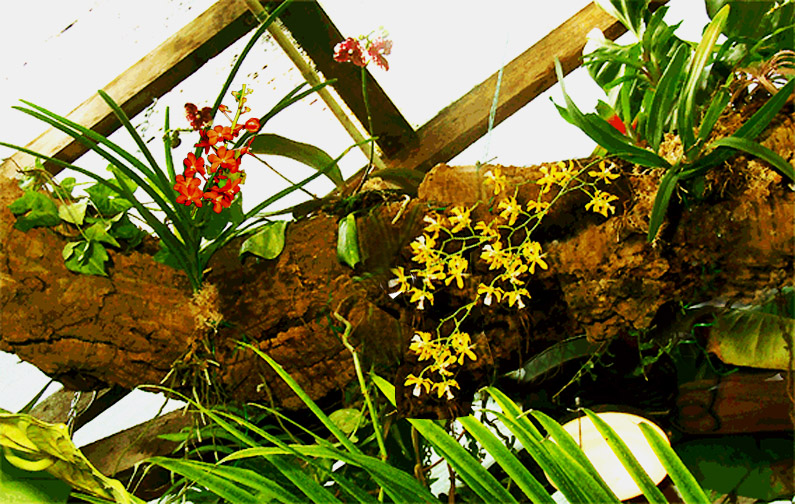 morphogenesis and natural variation within the species I collect and grow.
morphogenesis and natural variation within the species I collect and grow.
It has been my hope to document the change in the shapes and sizes of our plants since tropical plants change constantly. Much of my documentation can be found on the 300 plus pages of the ExoticRainforest website you are now viewing. I have specimens that look little alike as a result of eons of natural variation, almost every plant changes. But still, they are the same species. As a result it became personally important I construct an epiphyte (EP-e-phyte) "tree" on which these species can naturally grow and morph as they do in nature. The photos and information on this page will tell you how and why this "tree was constructed. The idea was not mine, it was "borrowed" from Fairchild Tropical Botanic Gardens in Miami, FL.
Variation within species is often difficult for collectors to grasp. One report indicates as many as one out of every eight plant species known to science is variable and not every leaf will always appear the same. Many people do not understand that a "species" does not have to refer to plants that always look exactly alike! Instead, a scientifically defined species indicates plants that have the particular characteristics and the same sexual features which in the case of aroids can include a very similar inflorescence (group of flowers).
Since the nearest rain forest is thousands of miles away from our home in NW Arkansas, as a retired commercial photographer, this tool will allow me to observe the plants and document them with a camera. My major obstacle is I get around in a wheelchair and haven't been to a real rain forest since the year 2000! Don't feel bad for me, I'm fine and have never considered myself handicapped. I simply have a desire to learn about the plant species I grow.
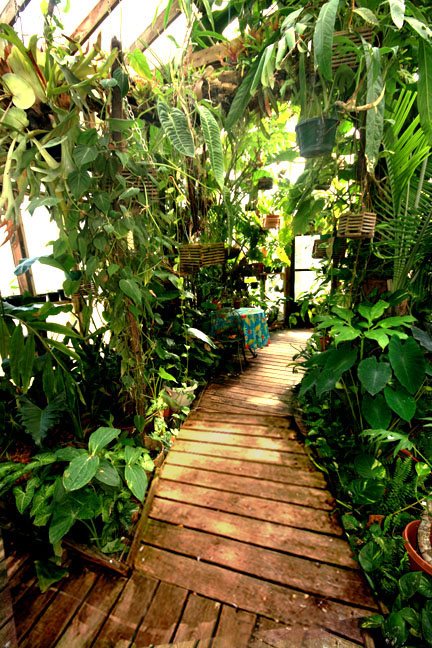 Now I am able to do my own research right
in our rain forest including observing epiphytic growth, the
oncology of the plant species as well as some of the morphological changes!
With a bit of luck I will be able to create a time lapse record of the natural growth
of our specimens and
document change while learning what happens in the tropical
rain forests of the world without traveling.
Now I am able to do my own research right
in our rain forest including observing epiphytic growth, the
oncology of the plant species as well as some of the morphological changes!
With a bit of luck I will be able to create a time lapse record of the natural growth
of our specimens and
document change while learning what happens in the tropical
rain forests of the world without traveling.
Most people simply do not care or understand that change is natural in a rain forest and plants don't look the same year after year since they change and produce many forms. There is also the factor of natural variation with plant species which causes the same species to produce a variety of leaf blade shaps. We now grow more than one species that shows variation and will be able to allow some specimens to grow together so they can compared as they morph. Natural variation
From day one the
goal of the
www.ExoticRainforest.com website has been to share what
we learn
with the aid of some of the world's best aroid botanists, aroid experts and collectors.
My personal observations are sometimes included on our web pages but I try to explain the plants as they are
understood
within science by using common language mixed with easily understood
definitions of technical terminology.
I am not a botanist nor do I claim to be an expert in any plant genera,
I am simply a student of botany with a constant list of questions
for the real experts. If something is unclear on any page feel
free to ask:
Steve@ExoticRainforest.com
I don't always know the answer, but I will do my best to help you
find one that is correct.
The
major problem in constructing our epiphyte tree was in learning how to safely suspend such a massive "tree"
structure
above the walkway of our Exotic Rainforest. In case you are not aware what an
epiphyte is, more plants grow up in the canopy of the rain forest than
down in the ground!
Anthurium, Philodendron, orchids,
ferns, Bromeliad sp. Epiphyllum
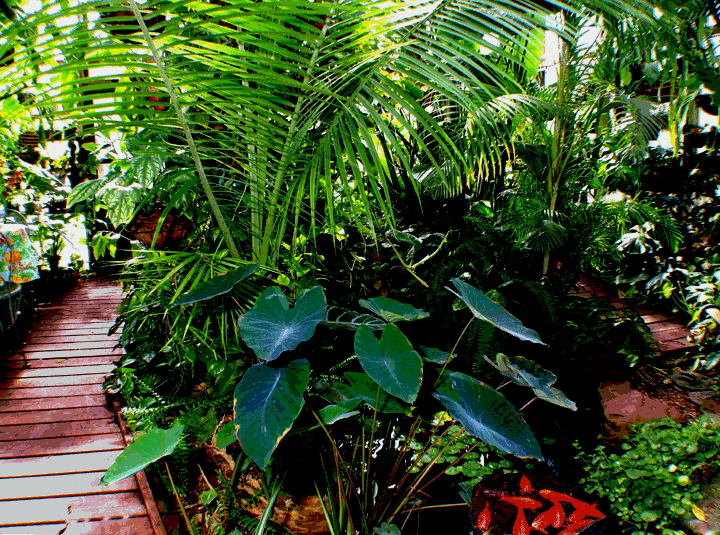 cacti and thousands of other
species do not need soil to survive
and flourish in the canopy. Their roots simply hang in the breeze.
cacti and thousands of other
species do not need soil to survive
and flourish in the canopy. Their roots simply hang in the breeze.
They are naturally attached to the limb of any tree and their long roots hang well beneath those branches! The plants grow in the canopy in to escape the deep shade and be nearer the source of light and rain. They get there because birds eat the berries containing seeds of rain forest plants and deposit those seeds on the branches in their droppings. Just enough nutrient is available in the bird's droppings to allow the seed to germinate and soon a new rain forest plant is born.
On May 28, 2008 my 8 year dream of accomplishing this task became a reality. I can now spend time in an epiphytic rain forest despite being in a wheelchair. With the assistance of three construction workers the first stage of our large "tree" structure was raised to a height of almost 4 meters (12 feet) on the left of the photo just below and not quite 3 meters (9 feet) on the right.
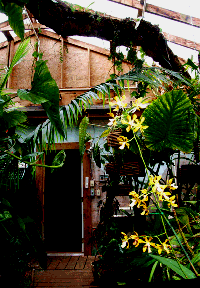 The next phase of attaching
more than one hundred specimens has began. The plants are
literally glued with Liquid Nails glue to the "tree" making sure
none of the glue touches the growing portions of any plant where the new
roots will emerge. The
Liquid Nails is lightly applied only to the roots and pressed into place
with a thin plastic covered wire strap. Those straps will have to remain for months, but in time the roots will naturally adhere just as they do in
the rain forest. Since our entire Exotic Rainforest is watered by
an automatic misting system on a daily basis (often twice each day) those plants will receive
water exactly the way they do in the rain forest only our water
contains minute amounts of fertilizer. As a result, growth is
substantially faster than when grown in a pot with soil. The
plants on our epiphytic tree are much closer to the light!
The next phase of attaching
more than one hundred specimens has began. The plants are
literally glued with Liquid Nails glue to the "tree" making sure
none of the glue touches the growing portions of any plant where the new
roots will emerge. The
Liquid Nails is lightly applied only to the roots and pressed into place
with a thin plastic covered wire strap. Those straps will have to remain for months, but in time the roots will naturally adhere just as they do in
the rain forest. Since our entire Exotic Rainforest is watered by
an automatic misting system on a daily basis (often twice each day) those plants will receive
water exactly the way they do in the rain forest only our water
contains minute amounts of fertilizer. As a result, growth is
substantially faster than when grown in a pot with soil. The
plants on our epiphytic tree are much closer to the light!
The entire idea was (see photos just below) based on an incredible rain forest display at Fairchild Tropical Botanic Garden in Miami, FL. I was privileged to be living in Miami when the Fairchild display was constructed and am amazed every time I return to see how fast their display has grown. In September, 2009 I was given cuttings of several of the most interesting specimens by horticultural workers at Fairchild. If you are going to be in Miami you must visit Fairchild! If you are in mid-America visit the enormous rain forest under glass at the Missouri Botanical Garden in St. Louis. You can see photos of the Fairchild exhibit below.
Our plants will take some years to fully grow in but in the Fairchild exhibit photos taken in September 2007 you will see what we hope our display will soon be like. Check back often to see the progress. I'll be posting new photos as the display plants are attached.
If you are in the NW Arkansas area you are welcome to visit our ExoticRainforest free of charge. If you are associated with any educational institution please feel free to use our rain forest as a teaching tool. The rain forests of the world cannot survive if we do not protect and learn about them! Where else in Arkansas can you visit a living tropical rain forest with tree frogs, lizards, beetles, crickets and a macaw?
Contact us at: Steve@ExoticRainforest.com
Steve Lucas
Photo taken January 31, 2009, nine months after the work began
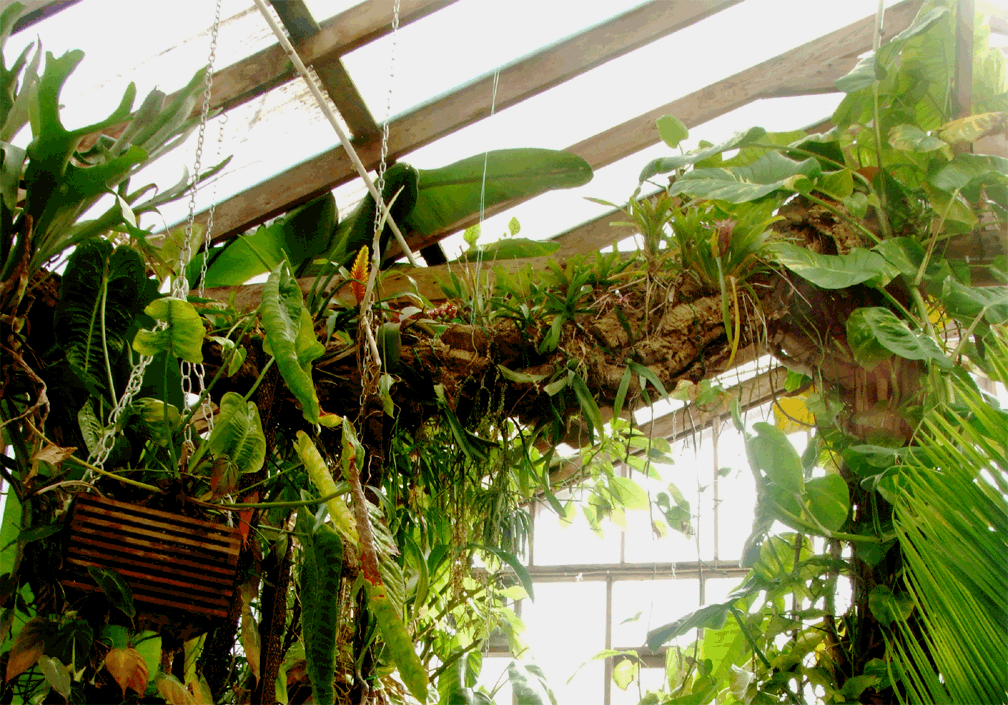
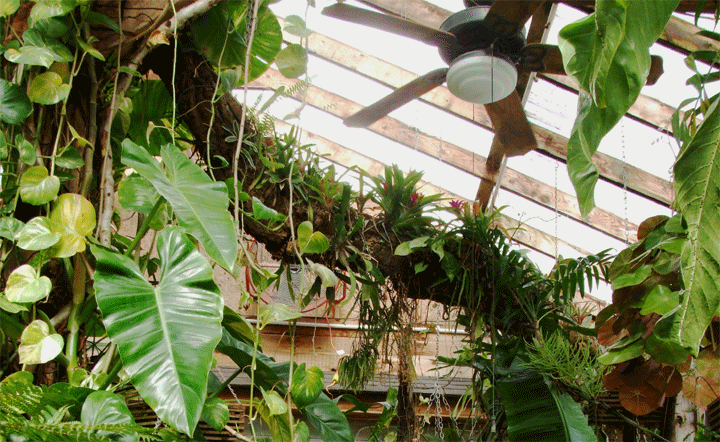
The building of a tree
April, 2008
Orchids and Bromeliads added on day 2
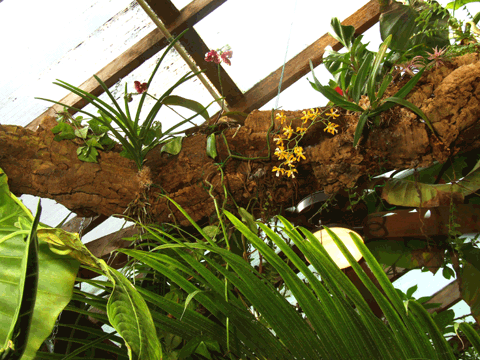
Plants and orchids including one Anthurium added on day 4
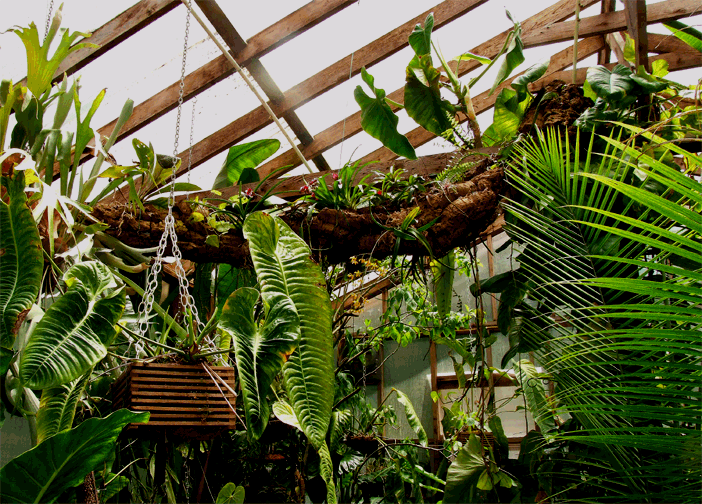
Plants and orchids added on reverse side day 4
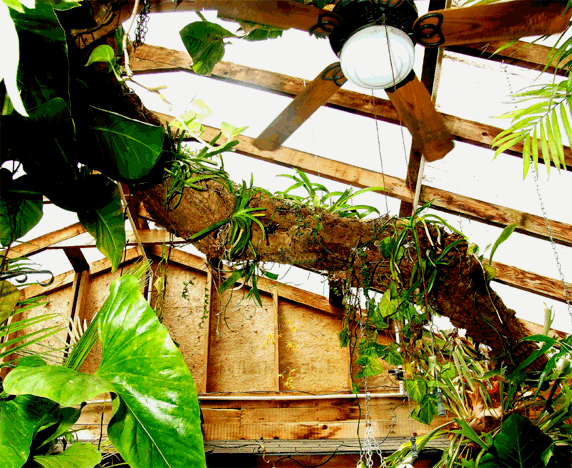
Plants, orchids and Lycopodium and Huperzia club mosses added on Day 5
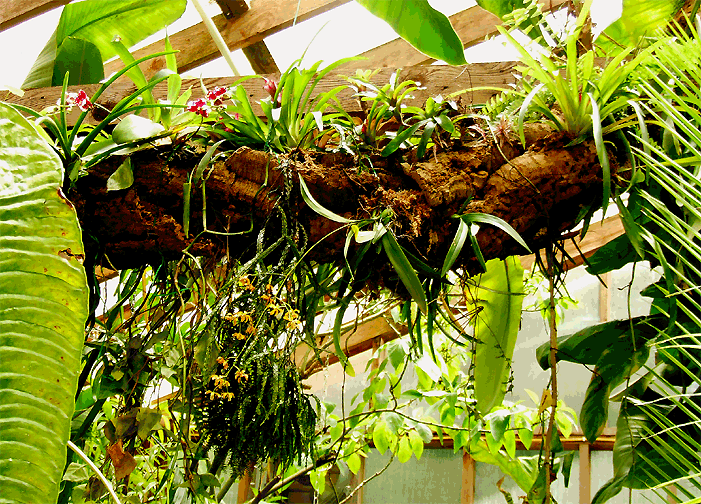
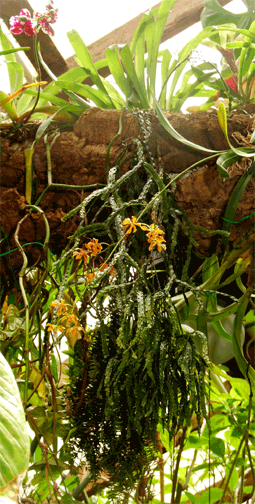
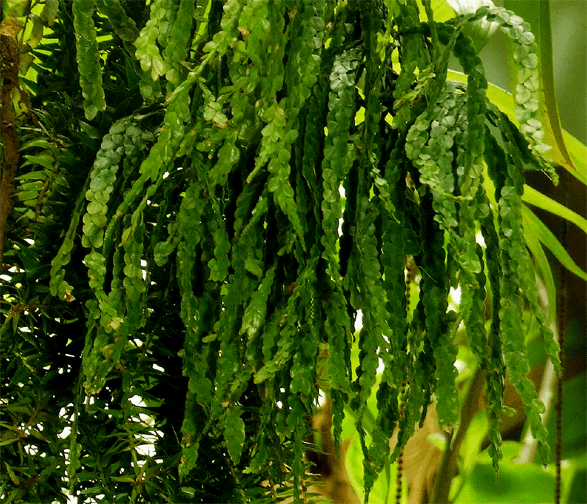
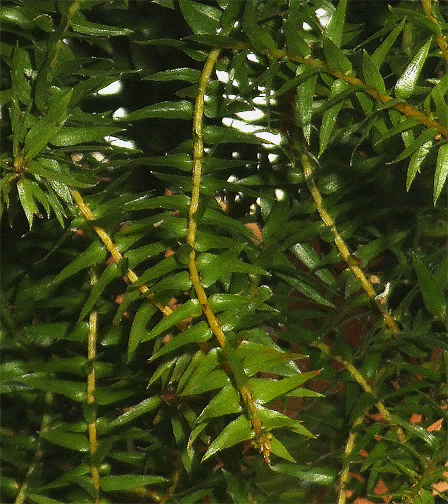
Reverse side of epiphyte tree, plants, orchids and Lycopodium fern added on Day 5
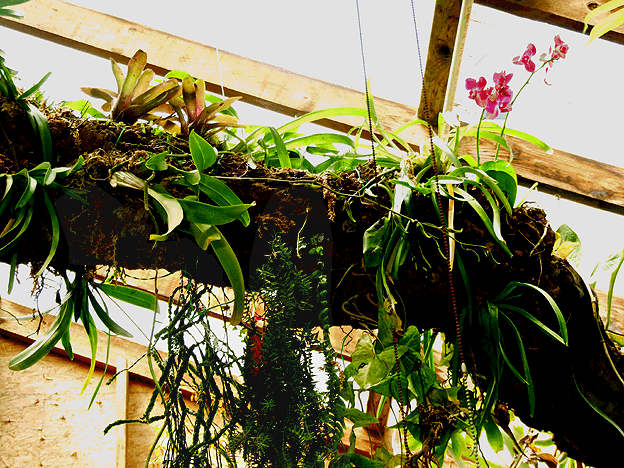
Approximately two thirds of the epiphytic tree (right) on July 6, 2008. Plants are beginning to attach and producing inflorescences.
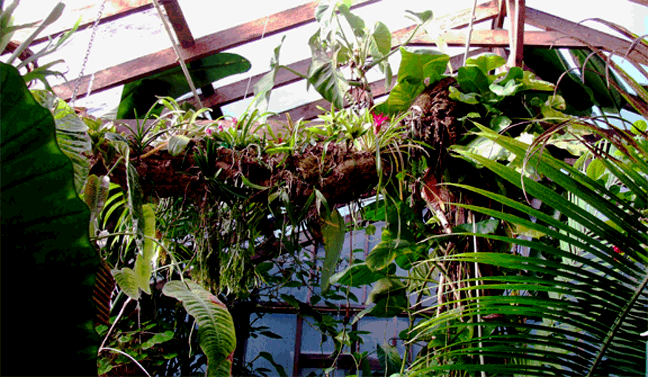
Our inspiration: Fairchild Tropical Botanic Garden, Miami, FL
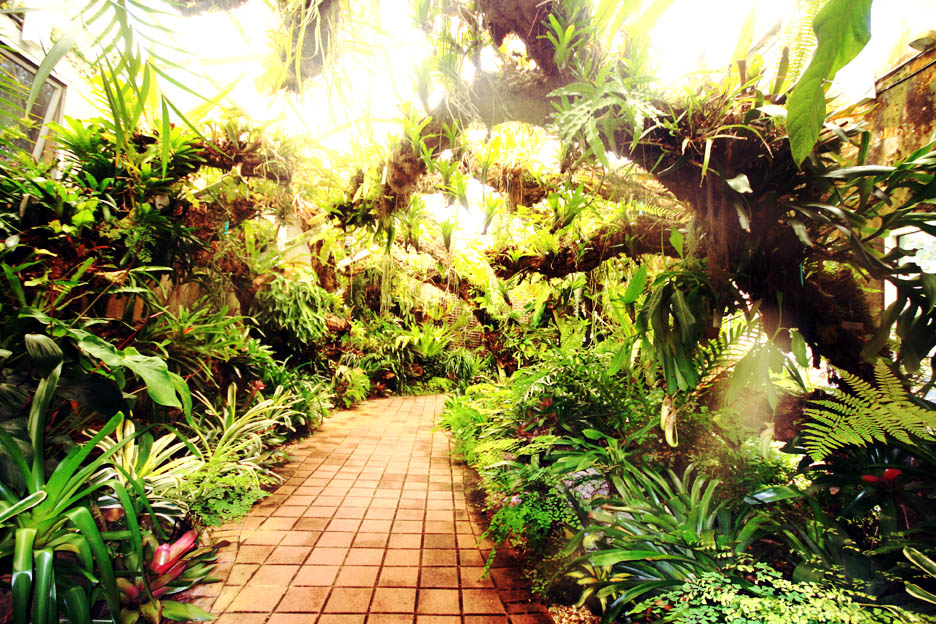
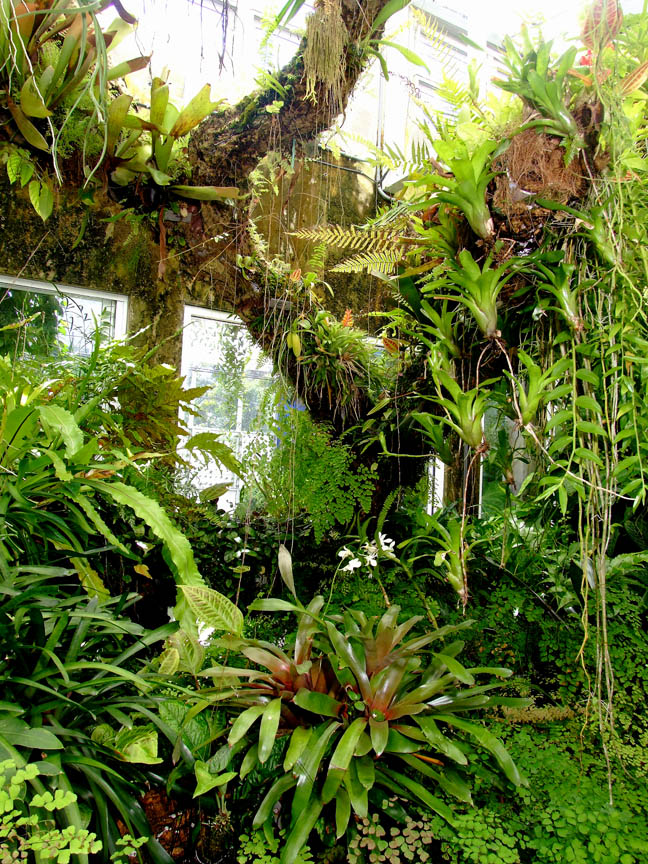
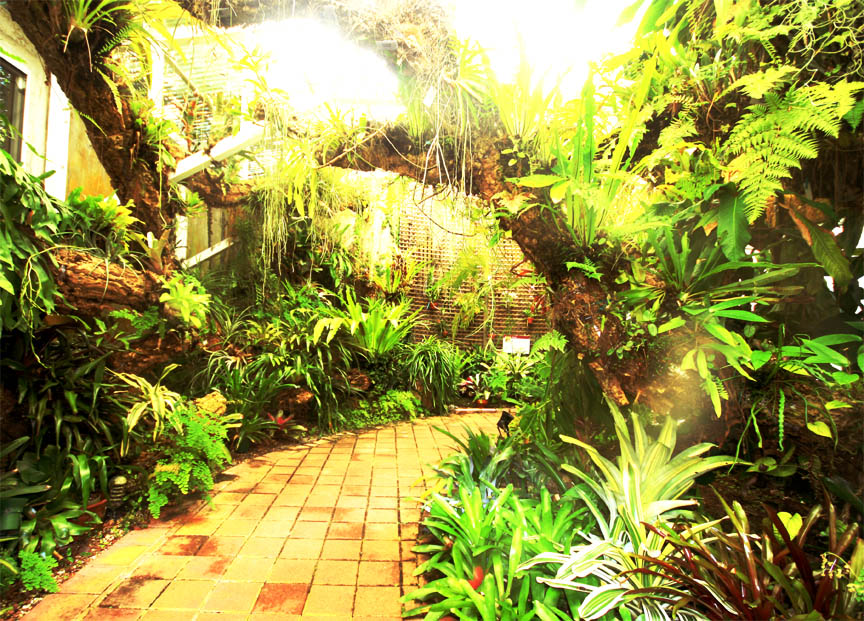
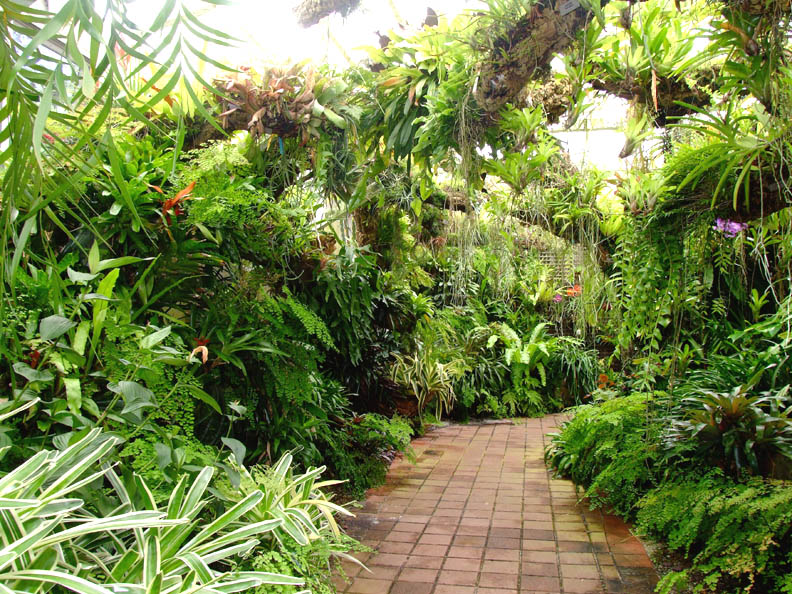
How to Build A Tropical Rain Forest. Anywhere!
Design your own Tropical Atrium
Growing Anthurium Species
How to Understand, Cultivate, Grow, Pot, and Water an
Anthurium
Aroid Pollination!
As
it occurs in nature and by any horticulturist
Huperzia
phlegmaria (L.) Rothm.
http://www.exoticrainforest.com/Huperzia%20phlegmaria%20pc.html
Want to Learn how to grow Rain Forest aroids?
Join the
International Aroid Society:
http://www.exoticrainforest.com/Join%20IAS.html
